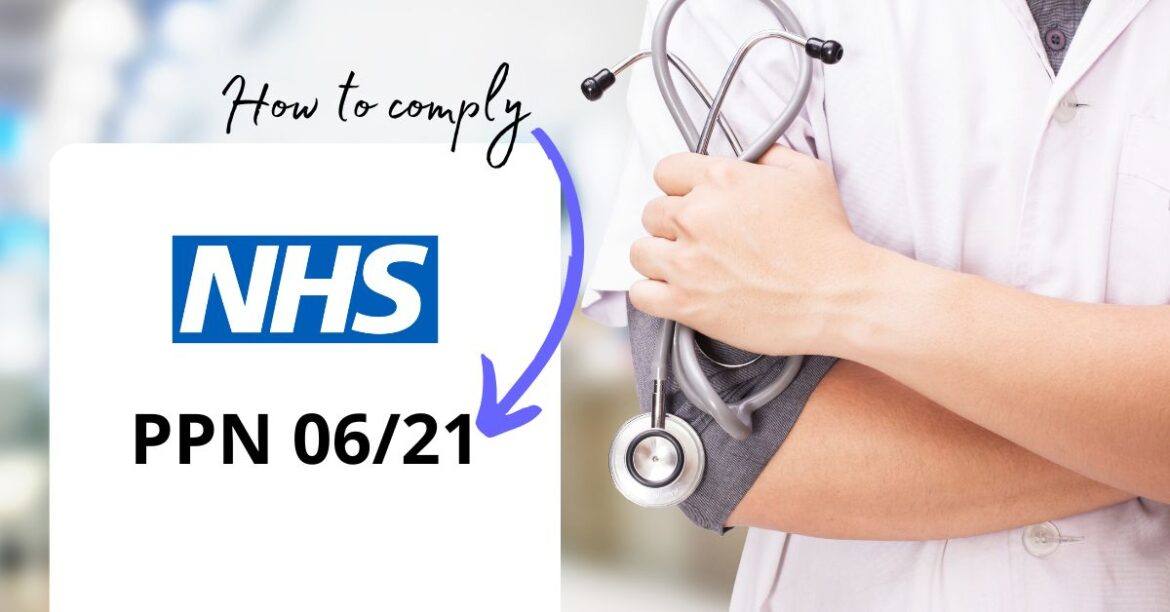NHS Carbon Reduction Plans: What your small business needs to know
- Carbon Reduction
- Carbon reduction plans
- Jan 08, 2025
If you supply goods or services to the NHS, it’s time to get familiar with the requirements for NHS Carbon Reduction Plans (CRPs).
The NHS is committed to achieving net zero emissions by 2040 for its directly controlled emissions—and by 2045 for emissions it influences. This is an even more ambitious target that the UK’s overall commitment to 2050. The NHS uses 80,000 suppliers and by setting strong net zero requirements, it can use its considerable purchasing power to influence change.
Here’s what a small business needs to know about the NHS Net Zero Supplier Roadmap, the steps to comply, and how it can benefit your business.
The NHS Net Zero Roadmap
The NHS Net Zero Supplier Roadmap builds on the UK Government’s Procurement Policy Note PPN 06/21, which requires suppliers to demonstrate their commitment to reducing carbon emissions.
Since April 2024, any business bidding for new NHS procurement contracts has had to provide a Carbon Reduction Plan (CRP) covering:
- Scope 1 emissions – Direct emissions from owned or controlled sources (e.g., fuel used in company vehicles).
- Scope 2 emissions – Indirect emissions from purchased electricity used by your organisation.
- Scope 3 emissions (a subset is required) – Indirect emissions from specific activities, such as transportation, waste, and employee commuting.
From April 2027, suppliers will need to include all Scope 3 emissions in their CRPs. There are 15 categories in total:
- Purchased goods and services
- Capital goods
- Fuel- and energy-related activities
- Upstream transportation and distribution
- Waste generated in operations
- Business travel
- Employee commuting
- Upstream leased assets
- Investment emissions
- Use of sold products
What is a Carbon Reduction Plan?
A Carbon Reduction Plan is a document that outlines your organisation’s carbon footprint, reduction targets, and strategy to achieve net zero emissions.
Breaking it down: Scopes 1, 2, and 3
Scope 1 & 2: The basics
- Scope 1 emissions: Direct emissions from sources you own or control, such as gas used for heating or fuel for company vehicles.
- Scope 2 emissions: Indirect emissions from purchased electricity used in your operations.
Many businesses already track these emissions, and existing assessments can meet NHS requirements.
Scope 3: The Subset for NHS suppliers
Scope 3 emissions are indirect emissions from your supply chain and business activities. While calculating Scope 3 can be complex, the NHS currently requires a subset of categories:
- Upstream transportation and distribution
- Waste generated in operations
- Business travel
- Employee commuting
- Downstream transportation and distribution
Small businesses can start by using estimated data, such as spending records, until more precise methods are developed. Don’t get caught in the details, use sensible industry estimates, such as the carbon footprint per square ft of serviced offices leased.

How to Create an NHS-Compliant Carbon Reduction Plan
These are the steps to follow to develop your CRP:
- Calculate Scope 1 & 2 emissions: Use energy bills and vehicle fuel data to determine your carbon footprint.
- Assess Scope 3 emissions: Focus on the subset required by the NHS. Estimate emissions using existing spend or activity data if necessary.
- Draft your CRP: Include your baseline emissions, reduction targets, and an actionable plan to reach net zero.
Ensure your CRP aligns with PPN 06 21 guidelines. We’ve added some hints and suggestions to the UK government CRP template to simplify the process.
Could NHS Carbon Reduction Plans help small businesses?
Beyond the chance to win new business, implementing a Carbon Reduction Plan now offers several benefits:
- Cost and Energy Savings: Identifying inefficiencies in energy use can reduce costs over time.
- Improved Competitiveness: Demonstrating your commitment to sustainability strengthens your position in all sorts of contract bids.
- Enhanced Brand Reputation: Customers and stakeholders increasingly value businesses with strong environmental credentials.
- Strategic Growth: Aligning your business with net-zero goals positions you for success in a low-carbon economy.
Struggling? Gopher Zero can help
For small businesses navigating CRP requirements, tools like Gopher Zero make compliance more manageable. Gopher Zero can:
- Help you calculate Scope 1, 2, and 3 emissions.
- Provide a low-cost NHS-compliant CRP, which anyone can create online in minutes using our know-how.
- Streamline next year’s data collection and reporting, saving you time and resources.
Ready to get started? Let Gopher Zero do the legwork and help your small business meet NHS requirements with confidence!

